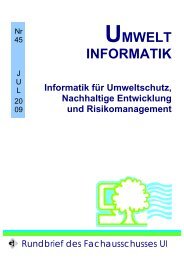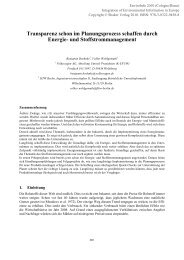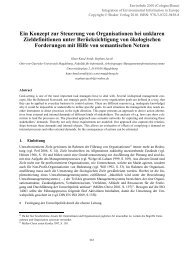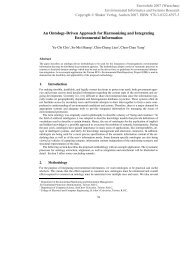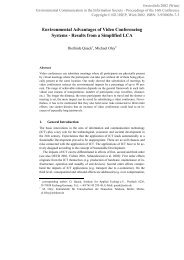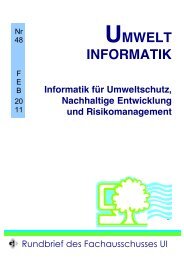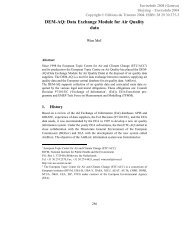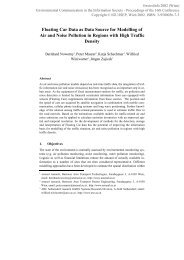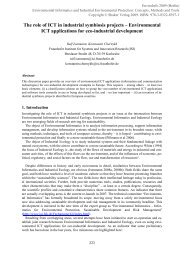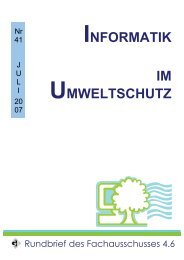the Case of Life Cycle Inventories - EnviroInfo
the Case of Life Cycle Inventories - EnviroInfo
the Case of Life Cycle Inventories - EnviroInfo
You also want an ePaper? Increase the reach of your titles
YUMPU automatically turns print PDFs into web optimized ePapers that Google loves.
Figure 3Top level <strong>of</strong> ISIC classification (United Nations 2008, 43)2.2 Introducing a new classification <strong>of</strong> activitiesIn contrast to that, <strong>the</strong> semantics proposed here takes into account <strong>the</strong> various types <strong>of</strong> ecoinvent activities.Some <strong>of</strong> <strong>the</strong> conditions <strong>of</strong> <strong>the</strong> individual activities vary quite a lot, making an exact categorization <strong>of</strong> <strong>the</strong>activities extremely challenging. Never<strong>the</strong>less <strong>the</strong>y can be subdivided into <strong>the</strong> following four main groups.providing a product: most <strong>of</strong> <strong>the</strong> ecoinvent activities describe <strong>the</strong> providing <strong>of</strong> products (goods and services).For example, this type includes activities describing <strong>the</strong> extraction <strong>of</strong> raw materials, <strong>the</strong> production<strong>of</strong> components or <strong>the</strong> supply <strong>of</strong> electric energy. In some cases multiple activities describe providing sameor similar products under different conditions and thus varying environmental impacts. In <strong>the</strong> case <strong>of</strong> rawmaterials, for instance, a distinction is made between primary raw materials and recycled secondary rawmaterials. Activities may already contain product losses, activities <strong>of</strong> wholesale and retail dealers as wellas transport and disposal activities. In addition to <strong>the</strong> production <strong>of</strong> tangible goods providing a service fallsinto this category as well. Services can be recognized by <strong>the</strong> dimensions in which <strong>the</strong>y are commerciallymeasured. Whereas quantities <strong>of</strong> tangible goods are specified in pieces or physical mass, services are definedin a variety <strong>of</strong> o<strong>the</strong>r dimensions, such as distances, work or time.Copyright 2011 Shaker Verlag Aachen, ISBN: 978-3-8440-0451-9






